Harold Wardale-Greenwood: Clergyman, Councillor and Businessman
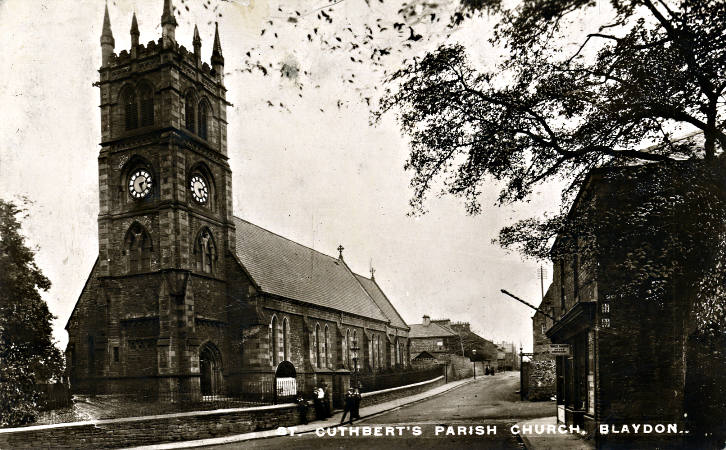
St Cuthbert’s Parish Church, Blaydon, Durham, England, c1910. Courtesy: Durham County Records Office.
After a short time in local government in 1920 Harold Wardale-Greenwood experienced rapid advancement to become the President of the Shire of Moorabbin in 1922. He first entered the Council after a bye election caused by the resignation of Cr Archibald Jackson in the Cheltenham Ward. He was then subjected to another election six months later when the normal council elections were held. On both these occasions he was unopposed by any rival candidate. [1]
Initially on standing for election to Council, Wardale-Greenwood wrote to the local newspaper setting out four issues that he wished to pursue. This was an unusual act at the time and one which drew the praise of the editor of the paper who saw it as an action that should be followed by all candidates in future elections. [2] Wardale-Greenwood noted that the provision of an adequate water supply for every inhabitant was an urgent issue. To achieve this objective he indicated his support for the Bunyip Water Scheme designed by the State Rivers and Water Supply Commission. Drainage was the second issue. Drainage he wrote was vital importance for the health of the people and he favoured a scheme which disposed of excess water by linking it to the sea by ‘any efficient engineering method’. His third issue was the train service. He saw the future of the district largely depended on to the provision of a quick, frequent and cheap train service to and from the city. To achieve this objective he indicated his intention to approach the railway Commissioners, through the Council, to urge such improvements. The fourth and final issue concerned the provision of preference for returned soldiers from the 1914-18 conflict. He believed no soldier should suffer any disadvantage because of loss of experience during his term of military service. Moreover, he favoured the principle of preference for qualified returned soldiers. [3]
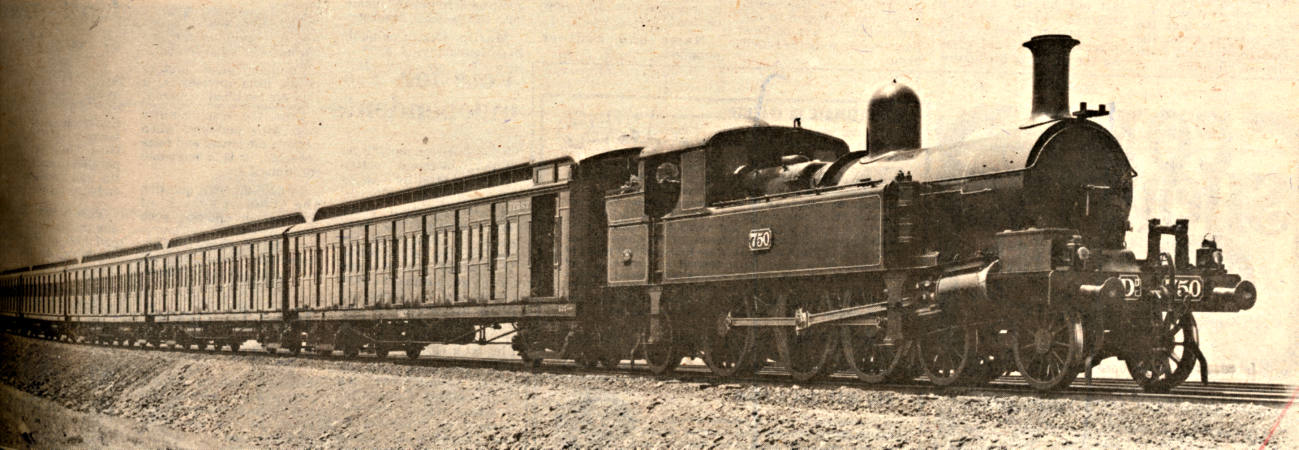
Steam train with red carriages on Mordialloc line prior to electrification. Courtesy Kingston Collection.
Once elected Wardale-Greenwood quickly found himself immersed in Council actions, moving and seconding motions, and joining committees and deputations to present the views of Council. It was on his suggestion the Council wrote to the Railway Commissioners about the evil done to the residents of the district with the heavy fares they imposed on travellers. He spoke of the circumstances of many people, including a councillor, who previously travelled first class having to down-grade to second class with the looming possibility of having to purchase workmen’s tickets if there was no rectification of the situation. [4] When Council’s usual contribution to the Victorian Civil Ambulance Association was debated Wardale-Greenwood gave his support but on the condition that cases in the municipality were promptly attended to without any question being raised on the ability of the user being able to pay the fee. [5] He joined Cr Marriott as a delegate to a conference called to discuss the attitude of the Government towards placing additional responsibilities on municipalities without providing the necessary resources to ensure success. [6]
The Mentone Gas Works was a public company formed in 1886 but after the financial crash of the 1890s the company was offered for sale to the Moorabbin Shire Council. Following negotiations on price the Council agreed to the purchase and went ahead with repairs and made improvements to the company’s operations. In 1920 with the formation of the Borough of Mentone and Mordialloc the gas works were no longer located in the Shire of Moorabbin but the Moorabbin councillors were reluctant to give up an asset in which they had made a substantial capital investment, and an enterprise which served many of their ratepayers. It was in this context that Cr Wardale-Greenwood expressed his views. The local newspaper described the discussion as ‘a tirade of bitterness’ towards the Borough of Mentone and Mordialloc and specifically named Crs Brownfield and Wardale-Greenwood for their contribution to the discussion. The newspaper report accused Wardale-Greenwood of making wild and erratic statements when he claimed the press were misrepresenting the facts. Cr Wardale-Greenwood said ‘the press did not take the trouble to inform themselves, and if they did inform themselves, they did not seem able to give a correct report.’ [7]
In 1922 Cr Wardale-Greenwood was proposing that a special rate be imposed on Cheltenham ratepayers to enable the erection of a caretaker’s cottage and pavilion on the recreation reserve. However, a public meeting in September rejected the idea. [8] Despite this set-back the councillor was appointed president of a committee given the task of raising subscriptions to erect a pavilion and complete the fencing of the reserve. [9] It was in that same month that Cr Wardale-Greenwood was urging residents, in a letter to the press, to organise and attend meetings, to write to the Council and to their representatives in State Parliament about the dangers that existed at railway crossings and demand action. Two deaths had occurred at Highett. Prior to writing the letter to the press he had joined a deputation to Mr Clapp, a railway commissioner, who pointed out that to make all crossings safe would mean considerable expenditure. The most Clapp would grant, wrote Cr Wardale-Greenwood, ‘was inter-locking gates at Ormond, and the rest must wait.’ This did not satisfy the councillor who reminded the readers of the newspaper that at Cheltenham within 100 yards of the gates is a State school, and 250 out of the 400 children who attend there have to cross the line each day. ‘The railways are ours,’ he wrote, ‘and we no longer are going to permit … our children and our citizens being hurled to death for the want of a few thousand pounds.’ [10] The emotional letter was signed by the councillor as President of the Shire of Moorabbin for in September of that year he was elected to that position by his colleagues on Council.
As President of the Shire, Cr Wardale-Greenwood involved himself in activities across the municipality. He said he was anxious to associate himself with every movement in the Shire which had for its object the improvement of the conditions of life for the residents. He and his wife were present at the Presbyterians’ fete at Cheltenham in November 1922. Formally opening the event, the councillor called upon those present to ‘back-up’ the Council in its efforts to protect the Sabbath from being ‘continentalised’. [11] In the same month he attended the Returned Soldiers’ novelty night in the Memorial Hall and acted as auctioneer during one activity. Two of his daughter assisted at the refreshments’ stall. [12]
Less than six weeks later he was performing the opening ceremony in the Cheltenham Mechanics’ Hall in support of the Moorabbin District Band. He spoke in felicitous terms about the objectives of the band and trusted the efforts of the band’s committee would be crowned with success and be the means of establishing a good band in the district. It was on this occasion that Cr Wardale-Greenwood indicated that he was resigning from the position of President and withdrawing from Council. He said he was acting on medical advice. [13]
The news of Cr Wardale-Greenwood’s resignation came as a surprise to many in the district but generated many favourable assessments of his contribution to the community. His quick rise within the Council to the senior position of president despite his short period of service as a councillor was noted in a newspaper report. [14] The reporter wrote that ‘Cr Wardale-Greenwood quickly adapted himself to the public service and within a few months became leader of the council in more ways than one. He exerted a considerable influence over the deliberations, and councillors of maturer years had been content to follow his lead.’ His success at the council table, the reporter wrote, ‘was a pleasing oasis in the wilderness of municipal inactivity.’
All councillors spoke praising their colleague at the time of his resignation, pointing to various attributes of the man. He was described as a powerful speaker, a man with clear headed capabilities and one who had the happy knack of controlling a meeting. One speaker thought that with the passage of time Wardale-Greenwood would have been elevated to parliamentary honours. He was a man, it was said, who had won his way into the affection of both staff and councillors. A C Smith, the shire secretary and engineer, mentioned that he had been employed by the Council for twenty three years and in that time no man had endeared himself to the staff more than Cr Wardale-Greenwood. The announcement of his resignation was received with regret, by his council colleagues, particularly as the circumstances of his ill health arose through war service. [15]
With the war in Europe in 1914-18 and the Australian Army being committed to assist Britain, Harold Wardale-Greenwood enlisted for service abroad. He was appointed to the 16th Reinforcement 23rd Battalion in August 1916. At the time he was aged forty years and eight months old, married with six children living at Cobballamia, Como Parade Mentone. His religious denomination was listed as Church of England and his occupation, secretary of St John’s Ambulance Association. He had served for four years with the Durham Volunteers in England prior to travelling to Australia. [16]
Initially recruits to the Australian army were volunteers, physically fit and between the ages of eighteen and thirty five, but attention was also given to previous military experience. The Gallipoli campaign had been waged between April 1915 and January 1916 while the Somme Offensive in France took place between July and November 1916. The major contribution of Australian forces in the latter offensive occurred between 23 July and 3 September. The massive loss of life in these campaigns meant that considerable pressure was put on young men remaining at home to volunteer so that reinforcements could be sent to Europe to replace those killed. What motivated Wardale-Greenwood to volunteer when he was outside the normal age range of volunteers and had large family depending upon him for support, is unknown.
Harold Wardale Greenwood embarked in Melbourne on the HMAT Ballarat on 19 February 1917 and arrived in England at Devonport two months later. During that time he was appointed acting sergeant but over the next few months he moved up and down between the ranks of private and acting sergeant. In November 1917 he was sent to an officer cadet training battalion in Oxford. The confidential report on his performance while there rated his education and military knowledge as excellent and his power of command and leadership as good. It was noted that he had a BA and MA from the Durham University. The assessor rating his performance wrote, ‘This cadet had the misfortune to break his shoulder during the course, which stopped him at work in the field. He has shown extra ordinary aptitude for organisation & he knows his job thoroughly. He organized the coy games, concerts with remarkable skill, & has set a splendid tone in everything. On account of his age I should think it would be far wiser to employ him in some organising branch of the service, than as a platoon officer not that he would not be splendid at the latter position.’ [17]
Commissioned as a second lieutenant he proceeded to France in May 1918 rejoining his comrades in the 38th Battalion. In the previous year the battalion had suffered massive casualties in the battles at Broodseinde and Passchendaele in Belgium. [18] In August 1918 the battalion was redeployed to France where it was involved in the Allies offensive action against the German army. It was during this time that Lieutenant Wardale-Greenwood was wounded in the right arm and head. Invalided to England he was discharged from hospital on 17 December 1918. A few days later he applied for early repatriation giving ‘family reasons’ to justify the request. His request was granted with the proviso that arrangements were to be made to utilize his services as an Educational Officer on the voyage to Australia. [19]
Harold Wardale-Greenwood was born on the 29 October 1875 to John Tatham and Mary Ann Greenwood in Louth, Lincolnshire. He was the fourth child in a family of four children, all boys. His father was a chemist. [20] In 1895 he was a student at Hatfield Hall, a college associated with Durham University. He graduated in 1897 having passed his BA finals in Classical and General Literature as a scholarship student who was awarded exhibitions. He stayed at Hatfield for another two years having been awarded another scholarship but his field of study is not recorded. He took his MA degree at Durham University on 25 April 1906. [21]
Prior to completing his master’s degree he was nominated in 30 January 1899 to the curacy of Witton Gilbert where he boarded with the Hetherington family. He remained at Witton Gilbert until 1905. He had been ordained as a deacon in 1899 and as a priest in 1900 in the Church of England by the Bishop of Durham although originally baptised at the Wesleyan Methodist Chapel at Louth. In 1905 he became the secretary of the Church of England Temperance Society for the Diocese of Durham and two years later was appointed rector of the parish of St Cuthbert and Blaydon-on-Tyne. He remained there until 1910 when he was made vicar of St Thomas Bishopwearmouth. In the Crockford’s Clerical Directory of 1913 he was listed as ‘travelling’. He had in fact travelled to Melbourne in the Mongolia with his wife and five children. His association with the Anglican Church in Australia was not as a clergyman but his name is etched on a stained glass memorial window at St Augustine’s Mentone as a member of the parish.
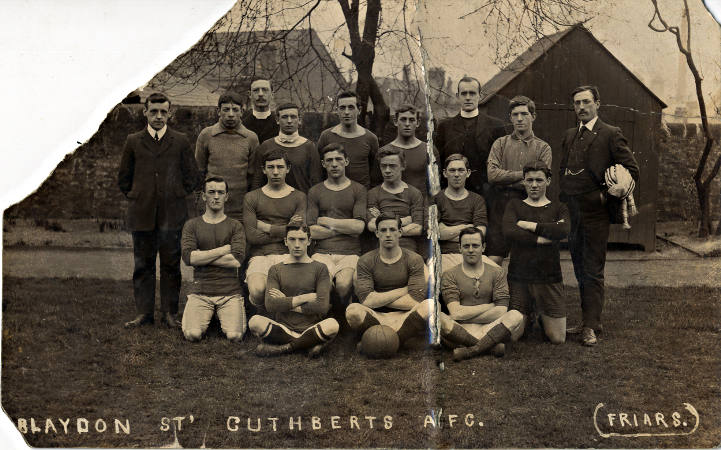
St Cuthbert’s Football Team, Blaydon, Durham, England. Clergyman on right Harold “Wardale-Greenwood, later President of the Shire of Moorabbin, c1910. Coutesy Durham County Records Office.
Harold and Mary Beatrix Wardale-Greenwood (Watts) had married at Durham in 1901. She was the daughter of the Rev Arthur Watts who was vice-principal of Durham Training College for Clergymen. She had two older brothers. [22]
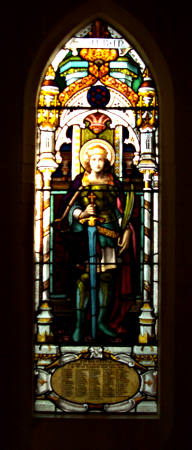
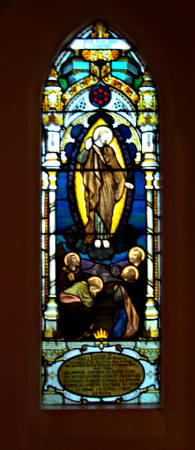
Memorial stained glass windows in St Augustine’s Anglican Church, Mentone. Memorial to soldiers who fought in World War One. Courtesy Kingston Collection.
After returning home from the conflict in Europe to Melbourne and taking up residence in the ‘Cottage’ in Bourke Street, Cheltenham he was employed as secretary of the Federal Bureau of Commerce and Industry, a position which he said put him into ‘close touch with trade and commerce in general, and in particular with primary and secondary production throughout the Commonwealth and in this State.’ [23] He also had a personal interest in commerce. In November 1922 an advertisement was placed in the Argus inviting people to purchase shares in a new company registered as Australian Road Transport Limited [24] Harold Wardale-Greenwood of Cheltenham was noted as a director in the company which aimed to provide heavy haulage and carrier services. The proposal was to immediately purchase four steam wagons from the Atkinson Steam Waggon Company, and later another six. The prospectus indicated that great profits were to be had, and once the shares were sold a regular transport business could be in operation within three months.
A little more than one year later the company was declared bankrupt. [25] It was earlier in that same year, not long after the launch of the transport company that Wardale-Greenwood announced his resignation from the Shire Council and his decision to move his family to a property he owned in Wodonga, North East Victoria. The weatherboard, five roomed house on two and half acres in Lawrence Street, Wodonga valued at about £800 was put up for sale in 1929 by the Official Receiver of the Law Courts, Melbourne, in order to discharge Wardale-Greenwood’s debts. He had been declared bankrupt. [26]
Losing the property in Wodonga, Wardale-Greenwood and family moved to Portland where he became a temporary assistant teacher at Portland Higher Elementary School, teaching students in years seven and eight. The following year, in 1930, he was appointed an assistant teacher on probation after an inspector commented that he was becoming accustomed to the syllabus and was stronger on ‘the literary side than the mathematical side.’ His appointment as a Class V teacher was confirmed with two excellent reports from inspectors. One wrote, ‘a scholarly teacher prepares well and presents clearly and logically and easily secures the cooperation of his pupils.’ The second inspector expressed similar views, writing ‘A kindly and stimulating teacher who plans his lessons well, is original in his method of presentation and uses the BB (Blackboard) to very good advantage and records a very good influence on his pupils.’ Unfortunately for pupils and Wardale-Greenwood this situation did not last. In September 1931 he retired due to ill health. [27]
By 1934 Mary Beatrix Wardale Greenwood, wife of Harold, purchased a property in Blair Street, Portland. From that time on Harold was once again contributing to community affairs. He became the secretary of the Portland Citizens’ band and secretary of the Committee of the Portland Hospital. In 1938 he carried on a lengthy dispute with the local council, reported in the local paper, wanting his wife’s name on rate records for the Blair Street property, replaced with his own. The reason he gave for this request was so he could stand in council elections. The Council response was that the change was unnecessary as Mr Greenwood could offer himself as a candidate without being listed on a local government electoral roll. [28]
Mary Beatrix Wardale-Greenwood died on 24 March 1941 while living at 14 Turner Street, South Camberwell. She was 62 years of age owning no real estate but with a bank balance of £476/2/3 to be distributed amongst her seven children. The executors of her estate were her two sons, Arthur John Wardale-Greenwood of Wallace and Harold Wardale-Greenwood who was serving as a chaplain in the Australian Imperial Forces.
Like his father, Harold Wardale Greenwood, was an ordained minister but in the Presbyterian Church. After graduation from Melbourne University and the Melbourne College of Divinity he was appointed to Stanley in Tasmania. With the outbreak of World War II as Captain Harold Wardale-Greenwood, he was appointed Chaplain of the 2/19 Battalion and went with the first convoy to Malaya where he saw action against the Japanese. Falling back to Singapore with his battalion, he along with many of his fellow soldiers was captured and imprisoned in Changi by the Japanese. Later they were transported to Sandakan in Borneo where thousands of prisons of war and civilian slave labourers died in a forced march. Captain Wardale- Greenwood survived the march only to die a month before the surrender of the Japanese forces in August 1945. [29]
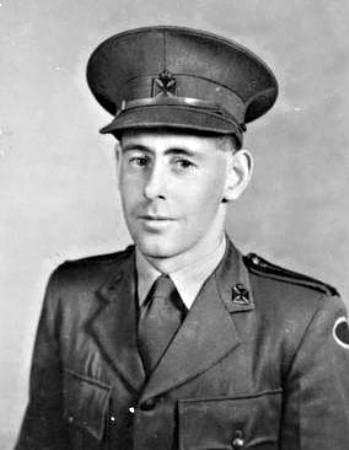
Captain Harold Wardale-Greenwood, Chaplain 2/19 Battalion. Courtesy. Australian War Memorial.
Unlike Captain Wardale-Greenwood his father survived the war but died shortly after at 71 years of age in 1946. His occupation was noted as secretary. His death was due to circulatory failure and congestion of the lungs. While he died in Geelong he was buried at the Springvale Crematorium. Harold Wardale-Greenwood was a very well educated man who related well to people, working hard to improve their conditions. He had a strong social conscience but made some poor business decisions which seriously impacted on the latter years of his life.
Footnotes
- Moorabbin News, 13 August 1921.
- Moorabbin News, 11 December 1920.
- Moorabbin News, ibid.
- Moorabbin News, 22 January 1921.
- Moorabbin News, 26 February 1921.
- Moorabbin News, 25 June 1921.
- Moorabbin News, 24 December 1921.
- Moorabbin News, 2 September 1922.
- Moorabbin News, 16 September 1922.
- Moorabbin News, 23 September 1922.
- Moorabbin News, 25 November 1922.
- Moorabbin News, ibid.
- Moorabbin News, 10 March 1923.
- Moorabbin News, 24 March 1923.
- Moorabbin News, ibid.
- National Archives of Australia, Military Record, Regimental No 3163.
- National Archives of Australia, ibid.
- Australian War Memorial website.
- National Archives of Australia, op.cit.
- British Census Household Record 1881.
- Correspondence : Dr M Stansfied, Archives and Special Collections, Durham University 2011.
- Ancestry Library, England Census 1881.
- Moorabbin News, 11 December 1920.
- The Argus, 10 November 1922.
- Trading Company Registration Files – Public Records Office C0008591G could not be found but the Index gives the date of the Bankruptcy registration.
- Wodonga & Towong Sentinel, 5 July 1929.
- Public Records Office, Victoria, Education Department Records.
- Portland Guardian, 9 June 1938.
- Portland Guardian, 10 December 1945.
